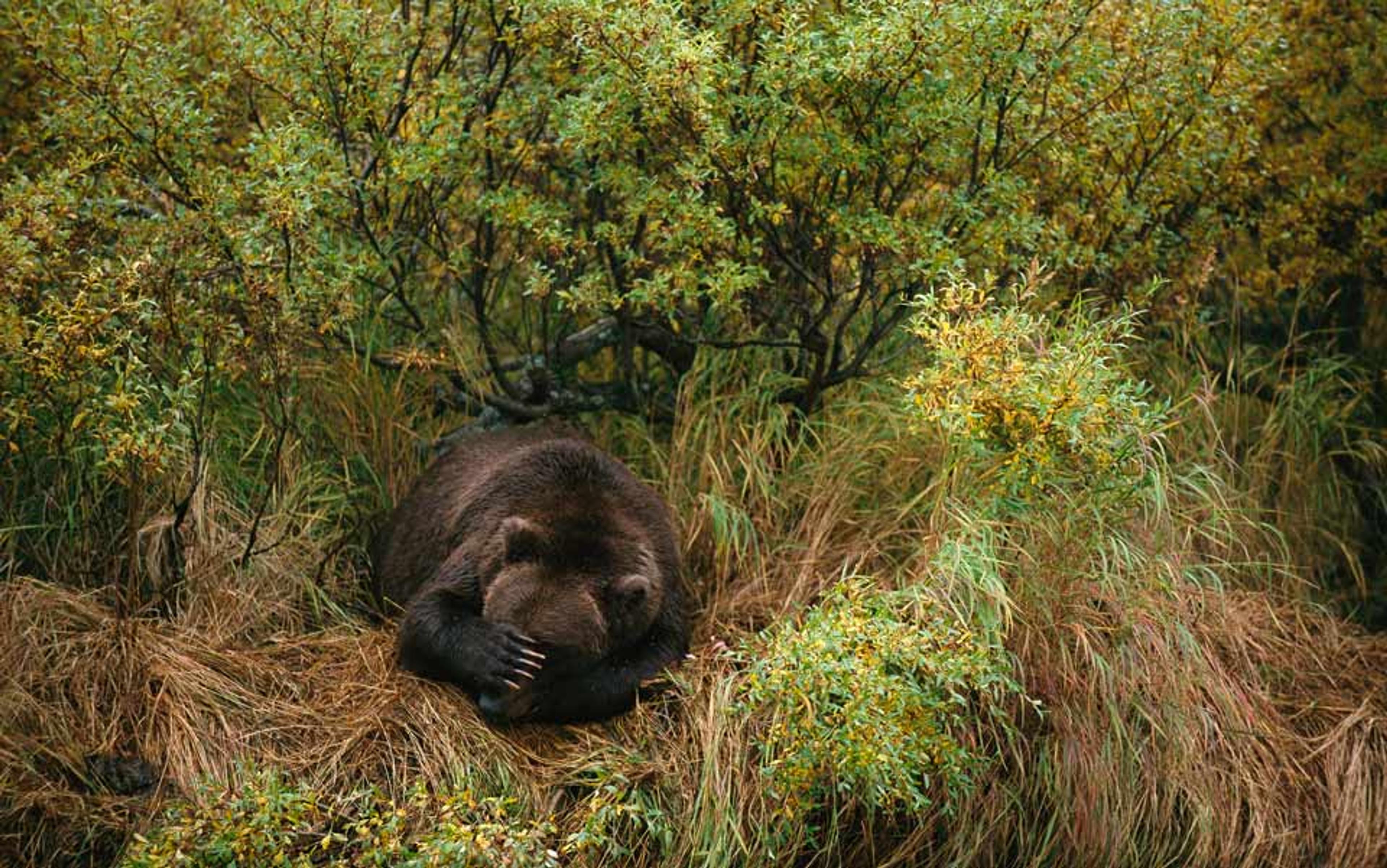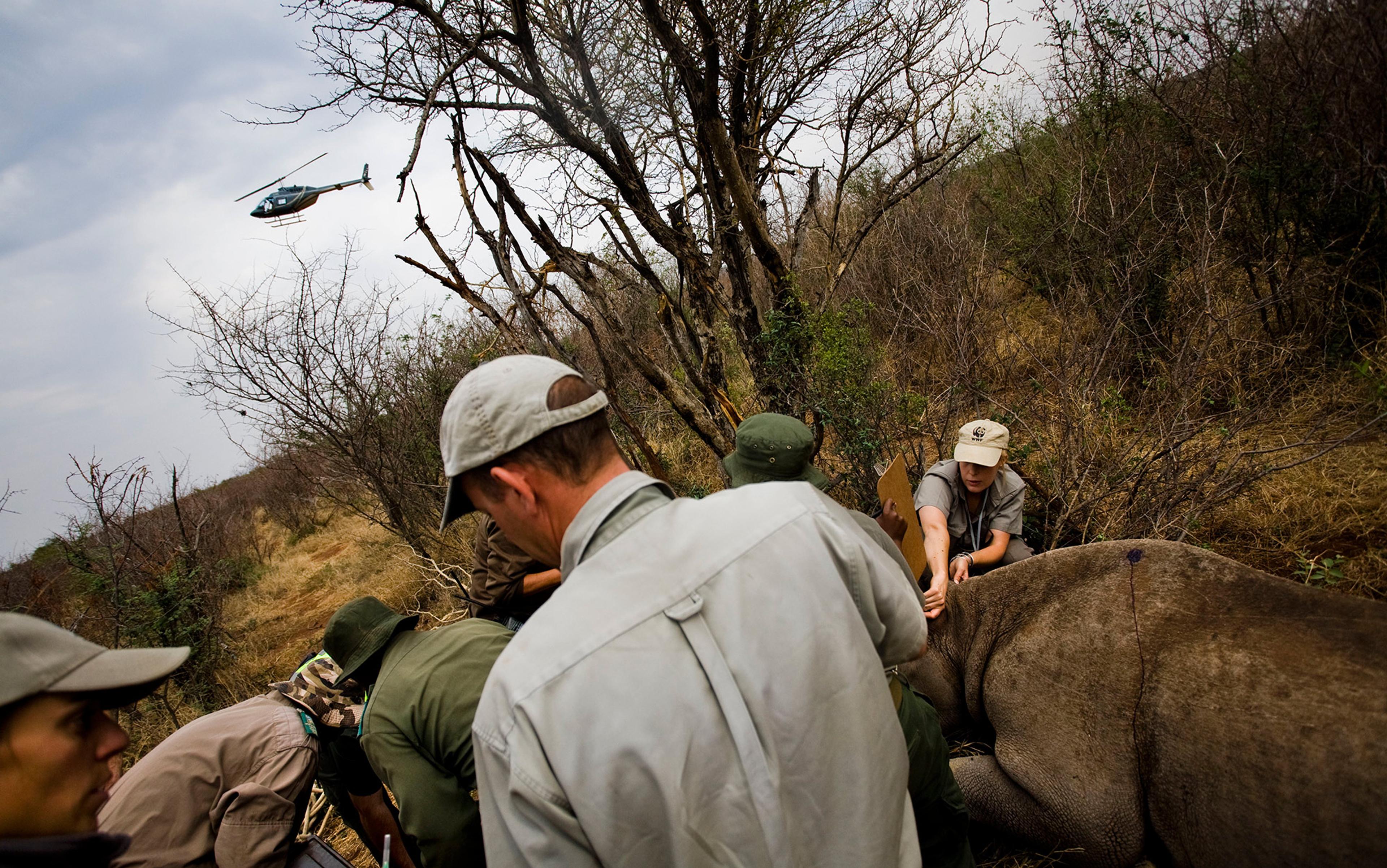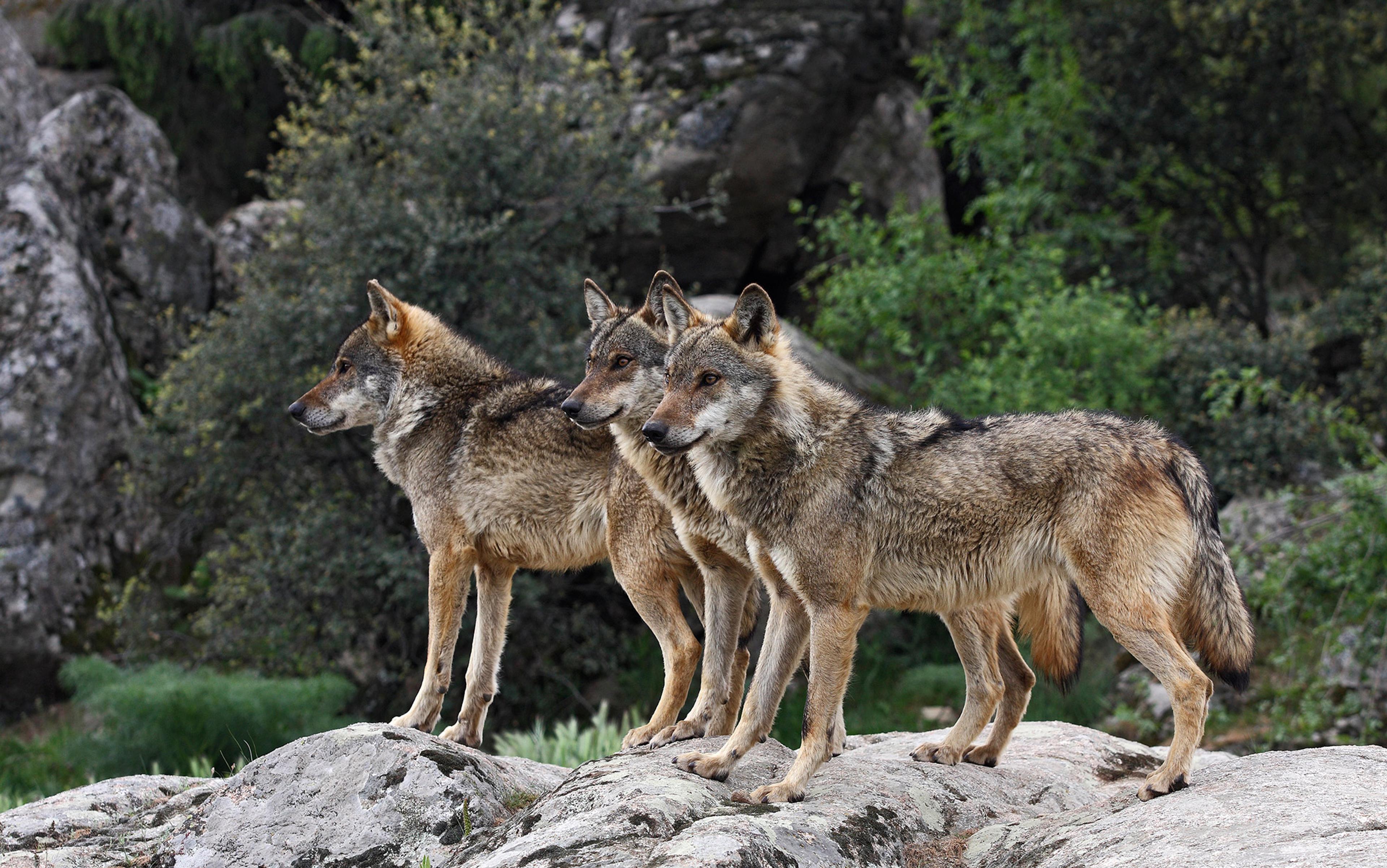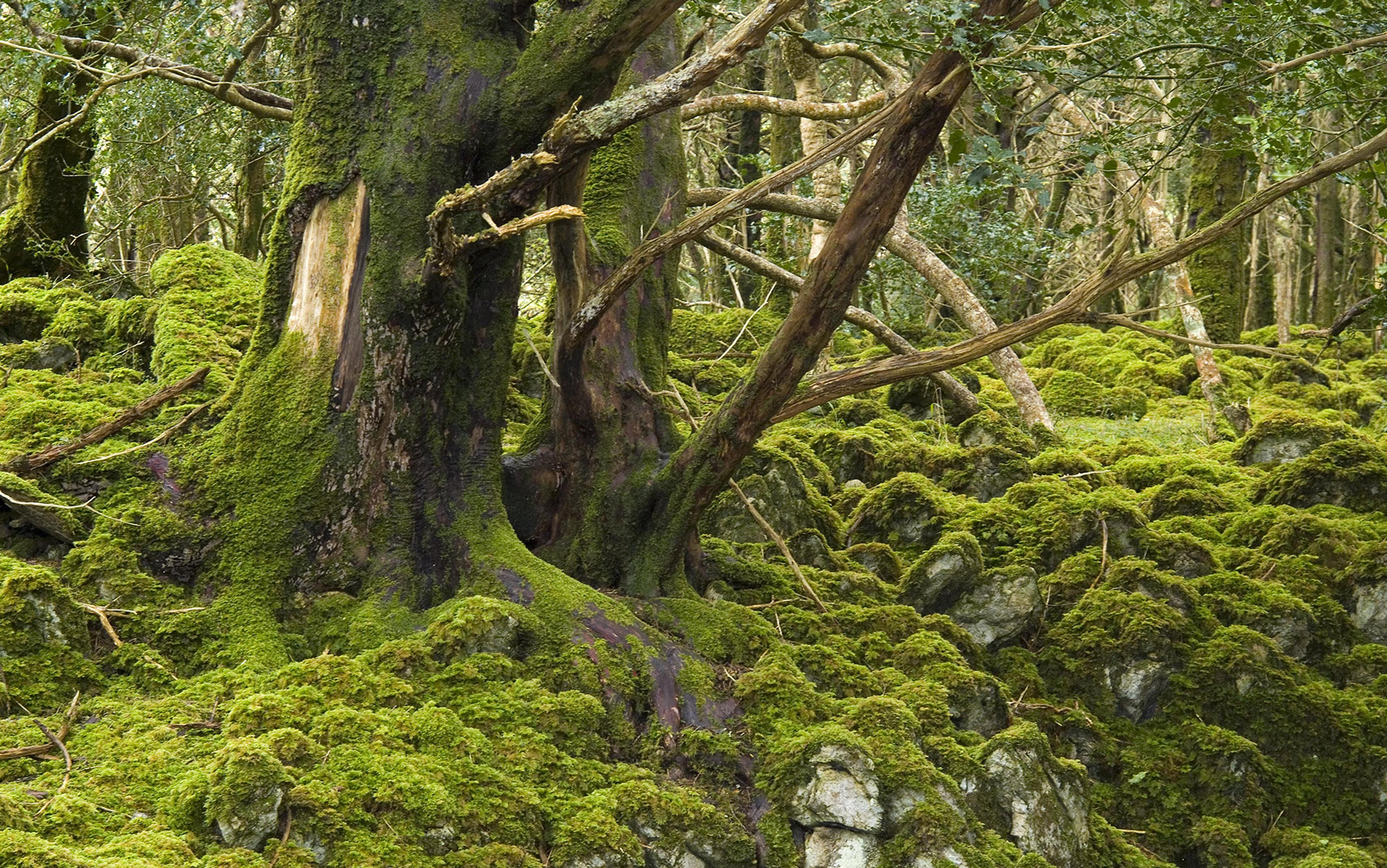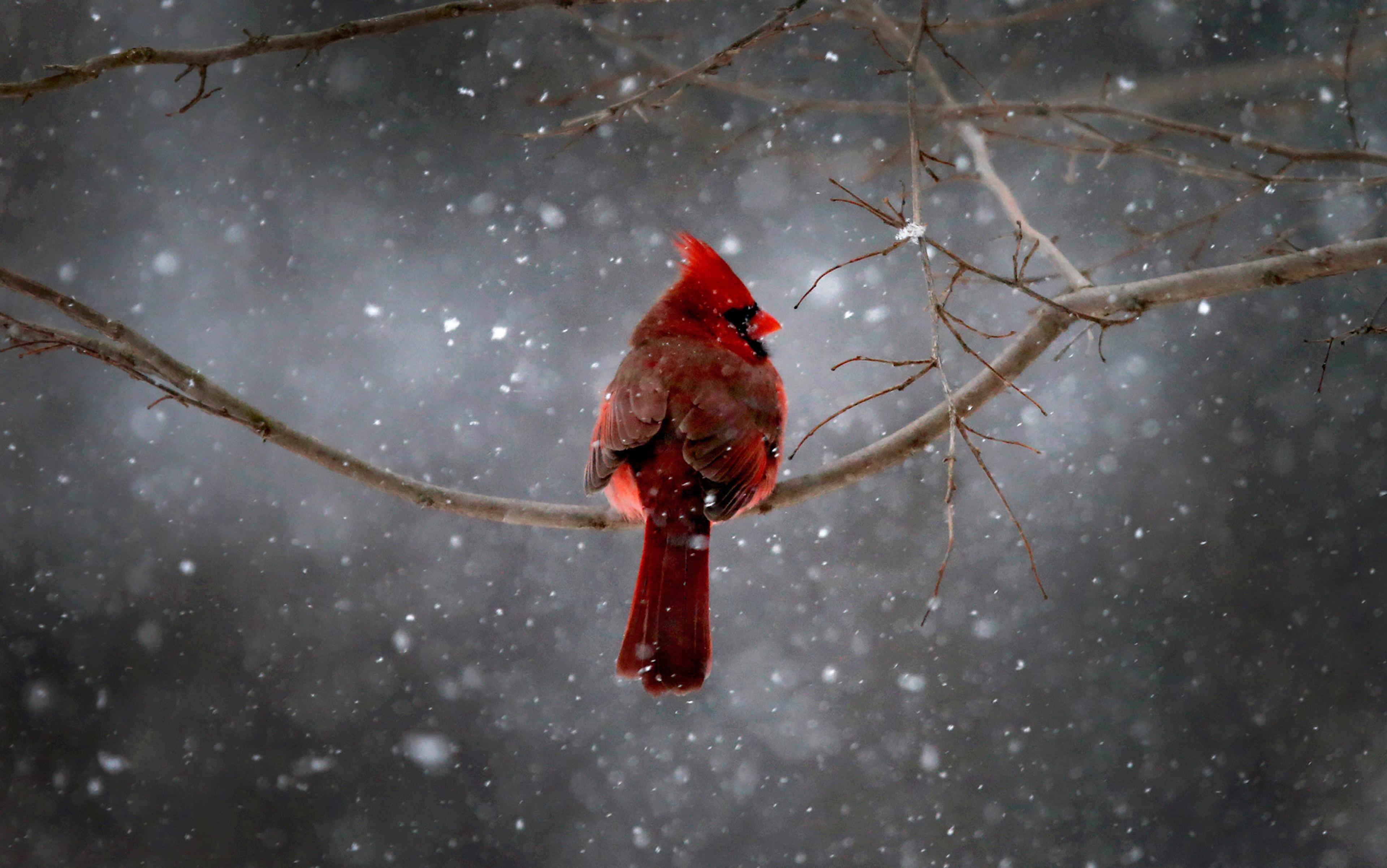Several years ago, I asked a biologist friend what she thought of a recently fashionable notion in environmentalist circles: that pristine nature was an illusion, and our beloved wilderness an outdated construct that didn’t actually exist. She’d just finished her shift at the local boardwalk, a volunteer-tended path through a lovely little peat bog that formed after the last ice age, near what is today eastern Maine’s largest commercial shopping area.
After a moment’s reflection, she said this was probably true, in an academic sense, but she didn’t pay it much mind. The fact remained that places such as the bog, affected by human activity, were special, and ought to be protected; other places were affected far less, but they were special and needed protection, too.
It was a simple, practical answer, from someone who’d devoted much of her life to tending the natural world. I find myself recalling it now that the ideals of conservation are under attack by the movement’s own self-appointed vanguard: the green modernists (aka the New Conservationists, post-environmentalists or eco-pragmatists), a group of influential thinkers who argue that we should embrace our planetary lordship and re-conceive Earth as a giant garden.
Get over your attachment to wilderness, they say. There’s no such thing, and thinking otherwise is downright counterproductive. As for wildness, some might exist in the margins of our gardens – designed and managed to serve human wants – but it’s not especially important. And if you appreciate wild animals and plants for their own sake? Well, get over that, too. Those sentiments are as outdated as a daguerreotype of Henry David Thoreau’s beard, dead as a dodo in an Anthropocene age characterised by humanity’s literally awesome domination of Earth.
That humanity has vast power is true. Human purposes divert roughly one-fourth of all terrestrial photosynthetic activity and half its available fresh water. We’re altering ocean currents and atmospheric patterns, and moving as much rock as the process of erosion. The sheer biomass of humanity and our domesticated animals dwarfs that of other land mammals; our plastic permeates the oceans. We’re driving other creatures extinct at rates last seen 65 million years ago, when an asteroid struck Earth and ended the age of dinosaurs.
By midcentury, there could be 10 billion humans, all demanding and deserving a quality of life presently experienced by only a few. It will be an extraordinary, planet-defining challenge. Meeting it will require, as green modernists correctly observe, new ideas and tools. It also demands a deep, abiding respect for non‑human life, no less negligible than the respect we extend to one another. Power is not the same thing as supremacy.
If humanity is to be more than a biological asteroid, nature-lovers should not ‘jettison their idealised notions of nature, parks and wilderness’ and quit ‘pursuing the protection of biodiversity for biodiversity’s sake’, as urged in a seminal essay co‑authored by Peter Kareiva, chief scientist at the Nature Conservancy, the world’s largest conservation organisation. Nor can we replace these ideals with what the science writer Emma Marris imagines as ‘a global, half-wild rambunctious garden, tended by us’.
Well-intentioned as these visions might be, they’re inadequate for the Anthropocene. We need to embrace more wilderness, not less. And though framing humanity’s role as global gardening sounds harmless, even pleasant, the idea contains a seed of industrial society’s fundamental flaw: an ethical vision in which only human interests matter. It’s a blueprint not for a garden, but for a landscaped graveyard.
Green modernism is not precisely new. Rather, it crystallises arguments that have percolated through conservation for the past couple of decades, and hit the zeitgeist after the publication of Marris’s Rambunctious Garden: Saving Nature in a Post-Wild World (2011) and Love Your Monsters: Postenvironmentalism and the Anthropocene (2011), a collection of essays produced by the Breakthrough Institute, a green modernist-leaning think tank based in California. Add Kareiva’s prominence at the Nature Conservancy, the media hook of a paradigm shift, and a general frustration – shared by green modernists and their critics – with conservation’s inability to halt ecological destruction, and the stage was set for what the US journalist Keith Kloor called a battle for the soul of environmentalism.
To this battle, the modernists bore strategic and tactical arms. In their eyes, conservationists were too gloomy, fixating on stories of loss: polar bears on melting icebergs, ecosystems forever changed. Nature is resilient, they argued. Forests grow back. Polar bears might handle the heat after all. Also, conservationists should be more realistic, acknowledging the impracticality of their hopes, and more humanistic. Too often had nature’s protections come at human expense.
‘Conservationists will have to embrace human development and the “exploitation of nature” for human uses,’ wrote Kareiva and his co-authors, Michelle Marvier, an environmental studies professor, and Robert Lalasz, the Nature Conservancy’s science communications director. Green modernists called for corporate partnerships and an emphasis on ‘ecosystem services’, by which nature is measured and commodified according to the benefits it provides us. They also chided conservationists as technophobes, slow to celebrate technologies that promote prosperity while shrinking our ecological footprints.
In themselves, many of these ideas were not so radical. They represented a 21st‑century update of a managerial approach already evident in everything from fishing limits to environmental impact statements. What made green modernism so controversial was the implicit ideological shift: that human interests should be elevated above all. The justification for this amounted to a rewrite of ecological history.
According to green modernists, mainstream conservationists are hopelessly fixated on a 19th-century vision of virgin wilderness unsullied by human hands. Consumed by nostalgia, they’ve failed to grasp the historical extent of humanity’s ecological influence, practicing a wilderness-worship that’s not only ineffective but delusional. ‘Conservation cannot promise a return to pristine, prehuman landscapes,’ Kareiva and colleagues wrote. ‘The wilderness so beloved by conservationists – places “untrammelled by man” – never existed, at least not in the last thousand years, and arguably even longer.’
Peering through sepia-tinted glasses, conservationists supposedly ignore less-pristine sorts of nature, the landscapes and habitats intertwined with our activities. Recalling a childhood spent playing in second-growth forests of the Pacific Northwest, Marris wrote that ‘ecologists and conservationists have long ignored such forests. In thrall to the lure of “pristine wilderness”, they shunned second growth.’
It’s an odd statement, given that a Google Scholar search of ‘second-growth forest’ returns more than 54,000 hits; and it’s easy to think of several conservationists whose environmental consciousness blossomed in such ‘ignored’ spaces. The poet-environmentalist Gary Snyder grew up in Marris’s own neck of the woods, on a ‘stump farm’ – a term derived from harvesting stumps left behind when giant first-growth trees were felled – north of Seattle. Bob Marshall, the forester and activist whose efforts led to the Wilderness Act of 1964 and America’s federally designated wilderness system, cautioned in 1930 that ‘unreachably high’ standards of purity would leave second-growth forest unprotected. Aldo Leopold, a father of modern environmentalism, whose seminal book A Sand County Almanac (1949) chronicled nature on a Dust Bowl-era prairie farm, is an especially interesting figure.
Wildness is self-willed. It is free and autonomous, existing independently of human control
A hunter and forester, Leopold was steeped in the managerial tradition of nature as resource, of trees and fish and pheasants existing for our use, albeit responsibly. Yet he came to consider this ideal insufficient, a transformation captured in ‘Thinking Like a Mountain’, his essay on killing a wolf. ‘After seeing the green fire die’ in the wolf’s eyes, he wrote, ‘I sensed that neither the wolf nor the mountain agreed with such a view.’
And there’s Thoreau himself, conservation’s patron saint and a favoured target for Anthropocene ideologues, who mock him for extolling the virtues of wildness while living within walking distance of town. If anything, this should make him even more relevant. Thoreau found ‘a civilisation other than our own’, and proposed that ‘in wildness is the salvation of the world’, in second-growth forest and alongside railroad tracks. But this is inconvenient for green modernism, just as it’s inconvenient to note the actual definition of the ‘untrammelled’ condition treasured by conservationists.
It does not mean untouched, but unrestricted. Wilderness, as formally enshrined in the Wilderness Act, is simply a place where nature’s processes have not been severely diminished by human activity. It’s best understood as a scale of wildness, a term originating in the Norse word for will. Wildness is – per Thoreau, together with the environmental historian Roderick Nash and generations of conservationists – that which is self-willed. It is free and autonomous, existing independently of human control. That’s what impassions so many conservationists: not just the Arctic National Wildlife Refuge or the Amazon’s jungle heart, but the wild life of their own everyday landscapes, their own bog boardwalks. A few might fixate on the pristine, but most possess a love of wildness and a far more pragmatic appreciation of wilderness.
Never mind that: the caricature of hair-shirt conservationism is a necessary foil for green modernism’s second premise: that 21st-century human activity merely continues what we’ve been doing for millennia. Those ostensibly pristine pre-industrial landscapes that hold conservation in their thrall were already transformed, in light of which the wilderness ideal is nonsensical.
‘Some environmentalists see the Anthropocene as a disaster by definition, since they see all human changes as degradation of a pristine Eden,’ wrote Kareiva, Marris, the environmental scientist Erle Ellis and the ecologist Joseph Mascaro in a 2011 New York Times editorial. ‘But in fact, humans have been changing ecosystems for millenniums.’ The Breakthrough Institute’s founders Michael Shellenberger and Ted Nordhaus struck a similar note in Love Your Monsters: ‘The difference between the new ecological crises and the ways in which humans and even pre-humans have shaped non-human nature for tens of thousands of years is one of scope and scale, not kind.’
The Amazon is a favoured example of this mass alteration of nature. The discovery of prehistoric planting beds and irrigation channels beneath presumably primal forest sparked a flush of excitement a decade ago. Those discoveries, best known from Charles Mann’s 1491: New Revelations of the Americas Before Columbus (2005) and from work led by the anthropologist Michael Heckenberger, seemed to rewrite ecological history. Far from being untouched wilderness, the great Amazon rainforest, Earth’s delicate lungs, had until recently been developed! ‘The whole notion of a “virgin rainforest” may be erroneous,’ wrote Kareiva in 2007 in the journal Science.
But that picture is highly controversial. While some parts of the Amazon were indeed populated, these were comparatively small: patches of intense modification strung through a vast wilderness. Certainly Amazonia was not domesticated at anything remotely like an Anthropocene scale. Some archaeologists have even suggested that the Amazon of the earthwork builders was a relatively dry, savannah-like place, making their accomplishments less dramatic. They practised local farming, not landscape engineering.
Once we outcompeted giant sloths and sabre-toothed tigers: now we have trouble sharing even with kangaroo rats and tiger salamanders
These aren’t just archaeological quibbles. Blurring the lines between limited human impacts in the past and extensive, Anthropocene-scale human activity today obscures the large and small wildernesses that still exist, from Southern Ocean deeps to boreal forests and much of the Amazon. Conflation also elides differences between lifeways. The limited, attuned management of nature – fires that are intentionally to mimic regional fire regimes, or agricultural systems dictated by existing hydrological cycles – is rated the same way as activities that overwhelm those ecologies.
Not that indigenous societies were always harmonious stewards with light footprints. There are many examples to the contrary, most notably the large-animal extinctions that followed once stone-age humans arrived in the Americas and Australia. Yet those extinctions hardly constitute the end of wilderness, or fall on the same spectrum as industrial-scale development. Once we outcompeted 20-foot-tall giant sloths and sabre-toothed tigers: now we have trouble sharing even with kangaroo rats and tiger salamanders. That’s the difference between the transformations wrought by several million people and by 7 billion, with drastically different resource requirements, and it’s obscured by a narrative of human omnipresence.
This narrative is linked, says the environmental law professor David Johns in an essay in Keeping the Wild: Against the Domestication of Earth (2014), ‘to the idea that significant human presence and impact means that humans are in charge’. It’s an exercise in modern mythmaking, the normalisation and self-justification of a human-dominated, wilderness-free Anthropocene, in which those pesky conservationists need to get with the programme. As Marris argues in Rambunctious Garden: ‘We are already running the whole Earth.’
All this might strike some as a tempest in a rooibos teacup: an internecine spat. But ideas matter, especially when they involve such fundamental questions of how we see ourselves in relation to other life. Discarding wilderness and downplaying wildness leads to some troubling ethical places. It comes from a troubling place, too: the environmental philosopher Eileen Crist likens green modernism to the mentality that put humans atop the medieval Great Chain of Being, and kept them there until Charles Darwin.
The garden metaphor is particularly loaded. A garden is not an ethical place. Life and death occurs at a gardener’s caprice. Plant or cut, tend or kill, include or exclude: it’s an exercise of morally unconstrained will, fine in a backyard but requiring boundaries both literal and philosophical. ‘Once we shift to a gardener’s mindset, it gives us too much freedom to do whatever we want,’ says the bioethicist Gregory Kaebnick. ‘And I’m speaking as an avid gardener.’
In a garden, there isn’t necessarily a sense that life has any value apart from what we assign. Neither individual beings nor larger entities – populations, communities, species, ecological processes – are intrinsically worthy of respect. The gardener ethic can’t account for that. What Leopold so eloquently advised, that we think of ourselves not as conquerors of life’s communities but as ‘plain members and citizens’, goes out the window.
Moreover, the values we do assign are inevitably weighted towards what we’ve planted and controlled. ‘Civilisation… is the garden where relations grow,’ wrote the poet Howard Nemerov, a telling phrase quoted by Gary Snyder in A Place in Space (1988). ‘Outside the garden is the wild abyss.’ This habit of mind is already deeply embedded in our development-oriented society. What’s unmanaged is devalued, if not downright invisible. Nobody walks straight through a flower bed; yet we trample a vacant lot’s so-called weeds without even noticing them. In a gardened Anthropocene, nature is at risk of becoming an abstracted aesthetic, interesting largely because we can find our own reflection in it.
Hence restoration to pre-industrial ecological baselines is considered impractical, but so-called Pleistocene rewilding – parks managed to contain analogues of million-year-old ecosystems – is celebrated. Trying to keep species from going extinct is old hat, but ‘de-extinction’ to biotechnologically recreate them is fashionable. Such projects are worthwhile, but they reflect a self-centred sense of Anthropocene nature that easily turns toxic.
To quit protecting nature for its own sake is to reconfigure our relationship to Earth as that of an empire to a resource colony
An egregious example comes from a National Public Radio blog post from this January titled ‘A Human-Driven Mass Extinction: Good or Bad?’ The writer, Adam Frank, riffed on a New Scientist interview with the ecologist Chris Thomas, who observed that some lineages are adapting to the human activities now driving so many others extinct. ‘How does that make you feel? How should that make you feel?’ asked Frank about the imminence of mass extinction. ‘The answer to this question depends mightily on what you think of as nature and where you think we fit into it.’
That line of thought would never be applied to human affairs – ‘A city was bombed last night, but other people are building shacks with the rubble! Good or Bad?’ The very question is risible. Human lives, after all, have intrinsic value. But by the logic of green modernism, non-human lives do not. Mostly they represent preferences, or services. It’s the exploitative essence of colonialism applied to nature, an enshrinement of the very attitudes that turned humanity into a biological asteroid. To quit protecting nature for its own sake, to judge conservation by the extent to which it furthers human interests, is to reconfigure our relationship to Earth as that of an empire to a resource colony. Earth: it’s all about us.
Wilderness and wildness are the opposite of that. As ideals, they embody respect for non‑human lives, recognising that they don’t exist solely in relation to us. Entering a wilderness, wrote Nash, we realise that we’re not in a playground, but someone else’s home. It opens us to perceiving the intrinsic value of other lives and the importance of sharing.
‘Conservation is driven by asking: who are the members of my community?’ says Kieran Suckling, executive director of the Center for Biological Diversity in Arizona. ‘It is an act of humility. It requires you saying, “What’s important is not only my desires and needs. It’s also what other creatures want and need.”’
Which isn’t to say that humans can or should cause no harm at all, much less cease activity. It’s impossible not to have a footprint. But we can think about where we put our feet, cultivate a sense of modesty rather than lordship, and let courtesy and respect guide us. It’s a habit of mind useful in affairs with our own species, too. ‘The lessons we learn from the wild,’ writes Snyder, ‘become the etiquette of freedom.’
Easier said than done, of course. Green modernists would retort that it’s unrealistic: those lovely ideals might have won a few battles, but conservationists are losing the war. New ideas are needed. Leaving aside the dubious proposition that principles should be abandoned when they’re difficult to practise, quite a few of their criticisms ring uncomfortably true.
Clearly something more is needed. Were conservation’s laurels enough to support our weight, Earth wouldn’t be headed for a mass extinction. And it’s true that conservationists have too frequently relied on shopworn platitudes. ‘Everything’ is very manifestly not ‘connected to everything else’; the extinction of a butterfly won’t bring down the whole ecological edifice. Likewise, prejudices against non-native species can be counterproductive; if non-native vegetation were actually eradicated, a great many butterflies would starve. The language of fragility and irreversibility grows tiring, too. Life can be fragile, but it can be remarkably resilient.
The green modernist emphasis on ecologically sound development is also welcome, even if its boosters strike some creepy notes. (‘Putting faith in modernisation will require a new secular theology,’ write Shellenberger and Nordhaus, and ‘require a world-view that sees technology as humane and sacred.’) The emerging field of conservation finance, a nature-focused spinoff of impact investments geared for social benefit, has tremendous potential. Billions of people want more prosperous, secure lives, and how they achieve them will determine nature’s baseline conditions across much of our planet.
However, without ideals of wilderness and wildness as guides, the compass spins astray. Pursuing intensification – the green modernist goal of more productive agriculture and denser cities, presumably leaving more space for nature – requires ethical direction. Otherwise the promise is merely of intensification across ever more of Earth’s surface. Embracing technology is similarly open-ended counsel. There’s a difference between crops engineered for high-yield drought resistance and those designed to withstand high doses of multiple pesticides.
Making such distinctions requires critical thinking about technology and development, not Kareiva and Marvier’s request that conservationists quit ‘scolding capitalism’, as if capitalism were some transcendent entity rather than a subject of constant debate. Equally unhelpful are the false dichotomies of Shellenberger and Nordhaus, who write that ‘living in a hotter world is a better problem than living in one without electricity’.
Chernobyl’s great and terrible lesson is that a nuclear meltdown is better for non‑human life than having us around
Green modernists make a point of celebrating urban nature, which is good. Non-human city life should be appreciated as a matter of principle. Bob Marshall wished we would ‘learn how to treat even the smallest elements of the natural world with respect’, even squirrels and scraggly inner-city elms. But as a tool for preserving life’s richness, urban nature is limited. Witness the global survey, published earlier this year in the Proceedings of the Royal Society B, of birds and plants living in cities. They contained, respectively, 20 per cent of the birds and 5 per cent of the plants that would be found in corresponding non-urban locales. Take away a city, then, and there’s twenty times the number of plant species, and 5 times as many birds. Yet this sombre statistic was greeted in some quarters as good news: cities can support life!
That Panglossian impulse characterises many of the examples given by green modernists as evidence of resilience: rare salamanders that, having lost their natural habitat, become ‘specialised to live in cattle tanks’; rainforests regrowing on abandoned agricultural land, and containing half the species that previously lived there. Chernobyl is another, iconic example of ostensible Anthropocene resilience: even after a nuclear meltdown, life thrives! But Chernobyl’s great and terrible lesson is that a nuclear meltdown is better for non‑human life than having us around. The best garden is not a garden at all. Earth’s plants and animals still need wilderness, big and small.
Some of that wilderness, of course, and much wildness, will need to exist in places where humans live, too. It’s great that the Nature Conservancy is working with the mining giant Rio Tinto to reduce its impacts in the Gobi desert, and giving advice on how to site dams in Columbian rivers to minimise their ecological harms. Damage control is vitally important. But it shouldn’t be conservation’s highest aspiration, and it’s hardly a strategy on which to bet Earth’s future.
To recommend, as Kareiva does, that we quit ‘pursuing the protection of biodiversity for biodiversity’s sake’ – or, in less sterile terms, life for life’s sake – and measure conservation ‘in large part by its relevance to people’, isn’t a bold new vision. It’s surrender. It’s also impractical: when can a line ever be drawn? When can a bit more prairie not be paved, or a river be left undammed – since damming and paving creates novel ecosystem of sorts too, and testifies to nature’s ability to adapt? Against this, green modernism would draw lines with ecosystem services: grasslands support pollinators; undammed rivers sustain commercial fish stocks. But can this strategy succeed on large scales? It might be possible to have rich services – clean air and water, productive ‘working landscapes’ – with a minimum of biodiversity.
As the biologist John Vucetich points out, the modern world aptly demonstrates that we can have human prosperity in the absence of once-abundant life. ‘There are so few black-footed ferrets on the planet that we’ve already proved we don’t need them,’ he says. ‘We’ll get along fine without swift foxes, or wolverines. You can list hundreds of species we can get along fine without.’
Vucetich sees the fight over green modernism as a clash between two visions of sustainability: one that exploits nature as much as we like without infringing on future exploitation, and one that exploits nature as little as necessary to lead a meaningful life. ‘It’s hard to imagine those two world views would lead to the same place,’ he says. ‘I think they would lead to wildly different worlds.’
Conservation’s successes are not just national parks and protected areas, but the many places where human appetites are restrained so other life might flourish: forest pockets at the edge of town, wetlands spared conversion to shopping malls. Defending these is the bread-and-butter work of conservation, and this needs ideals.
‘People volunteer to be on committees to study the mining proposals, critique the environmental impact reports, challenge the sloppy assumptions of the corporations, and stand up to certain county officials who would sell out the inhabitants,’ wrote Snyder of his neighbours’ efforts to guard their second-generation Sierra Nevada foothill forests from irresponsible mining and logging. Motivating them in this unglamorous work is not self-interest, he writes, but ‘a true and selfless love of the land’. It’s hard to imagine green modernism being so inspirational, or for that matter effective. Despite caricatures of conservationists as unwavering zealots, in practice conservation is an exercise in negotiation and compromise – and no decent compromise is ever reached by meeting halfway at the outset.
Here I think of another Maine example: the ongoing restoration of the Penobscot River, the second-largest river in the northeastern US, which for much of the past 9,500 years conducted vast runs of migratory fish between the Atlantic Ocean and the river’s 7,700-square-mile watershed. For the past two centuries, all but a few miles were locked behind a series of dams. Those migrations, which the historian and biologist John Waldman says once made eastern rivers ‘run silver’, had been winnowed to a few pitiful remnant trickles.
what sustained people through town meetings, impact statements and potluck fund-raisers was a love for what the river once was
Over the last decade, an alliance of conservation organisations and government agencies struck a deal with electricity companies: they’d purchase three dams, removing two and creating a passage around the other, while one dam would remain and increase its power generation. The agreement was precisely the sort of thing that green modernists champion: a balance between commercial interests and ecological values, providing energy while protecting life.
The Nature Conservancy helped to make the restoration possible, and rightly celebrate it on their website. But they weren’t the only ones involved. Negotiations were realised only because conservationists and fishermen had previously fought for decades to prevent further dam construction. The commercial value of restored fisheries and recreational opportunities was part of the dam removal argument, and helped to sell the project at a policy level. But the animating force that sustained so many people through years of town meetings, impact statements and potluck fund-raisers was a love for what the Penobscot once was.
One woman I know, an artist and wildlife ecologist who makes woodblock prints of river animals for local schoolchildren to use in art class, describes the project as a rebirth. Sometimes she wades the shallows, feeling in the mud for old stone sinkers left by Penobscot Indians in pre-industrial times. The Penobscot Indian Nation has supported the restoration too, treating it as an opportunity to heal the degradation of waters once central to tribal life. And while they have no illusions of the river returning to its former richness – after all, negotiation left one dam intact – they’re inspired by the vision. They’re also stirred by an intuitive sense of wrongness. For the Penobscot’s life to have been so heedlessly truncated was just not right.
It’s these feelings, wilderness-impassioned and modest and respectful, that ultimately made compromise possible. It wasn’t ecological cost-benefit analyses, nor some sense of humanity as planetary gardeners. Take away wilderness, both its reality and its ideal, and the dams would still be choking the river.
